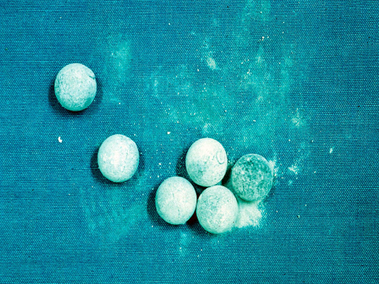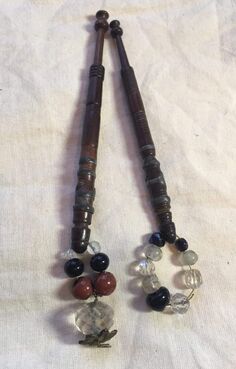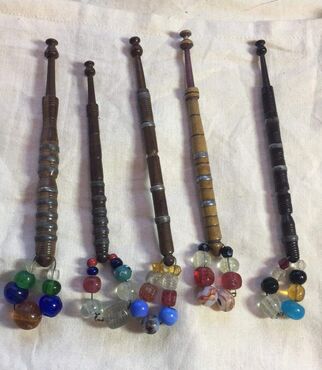|
Having just picked up some lovely bone bobbins on ebay, I thought it might be time to offers some advice about buying second hand modern bobbins. So here are my top tips on buying second hand on eBay (and elsewhere) 1) Is this bobbin still available from the original turner / painter at a reasonable price? Supporting our artisans is good karma, but obviously if it's a bargain then you are going to buy the pre-loved bobbin. Don't forget to check out 'find the maker' if you want to identify the maker is 2) Is the bobbin good value? If you have a budget, then set your limit according when bidding. It's really easy to get carried away and bid way over the top 3) Is this a private seller or a dealer? Always check out the other bobbins that the seller has on sale. There are starting to be a number of sellers who are effectively dealers, but pretending to be private sellers. They buy new bobbins from current artisans and then put them straight on to eBay with a markup. I don't believe in Caveat emptor - Buyer beware. If you then unsure about a purchase talk with one of the most experience lacemakers in the lace Facebook groups. You are more than welcome to message me. 4) Take a good look at the photos.
Fuzzy photos may be someone who isn't good at taking them or it may be an attempt to cover up a less than wonderful bobbin that has a fault. There is nothing stopping you contacting the seller to ask for more photos, or information, if you are really interested
0 Comments
Don't store under glass Bobbins should be stored out on a shelf or on a stand, putting them under glass, where there is little or no air circulating will cause blooming Not just wood, but also bone bobbins Remember, pewter inlay appears on both wooden and bone antique bobbins. A Nasty History Lead has a toxic history (sorry, couldn't resist the pun), from being included in the paint on toys being used as a sweetener in drinks. Yes, there was a history of adding lead to cider to make it sweeter leading to brain damage and death and is the origin of the jokes about 'country yokels'.  Lead musket balls with surface corrosion caused by exposure to organic acid vapours while displayed in a plywood display cabinet. Western Australia Museum Lead musket balls with surface corrosion caused by exposure to organic acid vapours while displayed in a plywood display cabinet. Western Australia Museum Blooming Lead can oxidise and start to have a white 'bloom' on it. This is a sign of 'lead disease'. Keeping antique bobbins in airtight containers will cause blooming. The first thing is do not touch this with your bare hands. Put on gloves. If you find that an antique bobbin has developed blooming then follow the advice from the Western Australian Museum on treating lead bloom. |
From time to time I post on different groups and wanted to collect some of the advice that I give in one places.
Categories
All
Archives
November 2022
|



